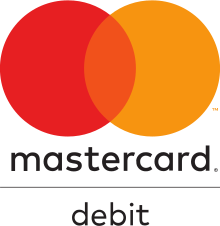Glossary of Terms
Find definitions to the key cannabis terms and language you’ll find on our site.
-
humidity pack
A humidity pack is a product placed inside an airtight container to maintain the correct moisture level of dried cannabis. Too much or too little moisture can affect the taste, smell and potency potential of cannabis, so a humidity pack is helpful in storing cannabis. -
humidor
A humidor is a box for storing items such as cannabis, tobacco and cigars that can monitor and control humidity. The amount of moisture cannabis contains can affect its taste, smell and potency potential, so a humidor is a useful tool for storing cannabis properly. -
hygrometer
A hygrometer is an instrument used to measure the humidity, or amount of water vapour in air and other gases. Humidity can affect the taste, smell and potency potential of cannabis, so a hygrometer is a useful tool for proper cannabis storage. -
illegal cannabis
In Ontario, any recreational cannabis purchased from a source other than Authorized Cannabis Stores and OCS.ca is illegal. Legal cannabis stores must display the Cannabis Retail Seal outside their front entrance and on their websites. Search for an Authorized Cannabis Store using the OCS Store Locator. -
kief
Similar to hash, kief is a powder made up of the dried crystal-like trichomes that fall off cannabis flower. It’s sifted using a mechanical process, so solvents are not required, and it contains the same cannabinoids and terpenes as the plant it came from. Kief can be smoked, vaped or dabbed. -
MCT oil
Medium-chain triglycerides, or MCTs, are fats that are broken down and quickly absorbed into the body. They are found in foods such as palm kernel oil, coconut oil and butter. Cannabis concentrate is often mixed with MCT oil to create cannabis oil. -
pre-roll
Commonly referred to as a joint, a pre-roll is a thin rectangle of paper filled with finely ground dried flower that is shaped into a cone or straight narrow cylinder. Most pre-rolls typically include a filter on one end that prevents the cannabis from being inhaled during smoking. -
rosin
Rosin is a cannabis concentrate that is full of cannabinoids and terpenes. It is created through a solventless process that involves pressing dried cannabis flower between two heated plates. -
shatter
Shatter is a highly potent cannabis concentrate that can be consumed by dabbing or vaporizing. It can also be added to dried flower in a joint. This glass-like extract comes in a range of amber and orange hues and is made by first stripping the cannabinoids from the cannabis plant using a solvent, and then collecting and processing them. -
solvent
A solvent is a substance that can dissolve another substance. Solvents such as butane, propane, ethanol and carbon dioxide are sometimes used during the cannabis extraction process. -
sublingual
Sublingual means “under the tongue.” Cannabis oil is typically taken sublingually and its cannabinoids absorbed through the mouth. -
wax
Wax, also known as badder, budder or crumble, is a highly potent cannabis concentrate that can be consumed by dabbing or vaporizing. It can also be added to dried flower in a joint and smoked. It is produced with a solvent or CO2 then heated and agitated to create a product with a whipped consistency. -
blunt
The term blunt describes cannabis flower that’s rolled in a thicker, cigar-like wrap, often made of hemp. Traditionally, blunts are created by emptying a cigar of its loose-leaf tobacco and replacing it with cannabis. In Canada, legal cannabis products may not contain nicotine.
Note that the OCS does not carry products that contain nicotine.
-
terp sauce
Terp sauce, or high terpene full spectrum extract (HTFSE), refers to a cannabis concentrate that aims to preserve terpenes in high concentrations. The consistency of the extracted concentrate is similar to oil, sauce or resin. -
hash
Hash is one of the oldest types of cannabis concentrate and comes in multiple formats, from bubble hash to traditional pressed bricks. To create hash (also called hashish), trichomes are collected from the cannabis plant using various mechanical processes, depending on the kind of hash being produced. Hash can be smoked, vaporized or dabbed. -
harvesting
Harvesting is a step in the growing process when ripe cannabis flower is removed from the plant and cured.
Cannabis plants can be harvested in the flowering stage (usually between 56 and 75 days after flowering), once approximately 60% of the trichomes on the buds turn from milky white to amber.
-
germination
Germination is the process by which seeds begin to grow into plants. The seed first produces a root and then a shoot above ground and, finally, leaves to capture nutrients from the sun.
The OCS cannot guarantee that the seeds it sells will germinate, because there are too many variables, such as the correct temperature, water and soil, involved in the growing process.
-
dose
When referring to cannabis and cannabis products, the dose is the amount consumed (typically measured by the amount of THC) or the frequency of consumption. There is no specific dosage for cannabis products — only you can determine how much is right for you. Health Canada suggests starting with a low dose, such as 2.5 mg THC, and gradually increasing it as the effects become apparent. -
distillate
Cannabis resin can be refined through heating and condensing to isolate a specific compound, such as THC. The resulting liquid is a concentrated form of cannabis, called distillate, that’s often used in vape cartridges, as well as topicals, edibles and other cannabis products. Distillate can also be mixed with a neutral oil, such as medium-chain triglyceride (MCT) or sunflower oil, and packaged as an oil, capsule or spray. -
dab rig
A dab rig is an accessory used for dabbing cannabis concentrates. A small amount of concentrated cannabis, such as wax, is dabbed onto a heated element and the resulting vapour is inhaled. Dab rigs are typically made up of a water pipe, nail or banger, dome and dabber, and can be purchased together or in separate parts. -
dab, dabbing
A dab is a small amount of concentrated cannabis, such as shatter or wax, that is consumed using a dab rig or dab pen, or vaporizer. A small amount of concentrate is touched against a heat source, in most cases a titanium, glass, quartz or ceramic nail, to create a vapour, which is inhaled through the mouthpiece. Dabbing requires more equipment and setup than other methods of consumption, and caution should be used due to the high temperatures.
-
concentrate
Concentrates, as their name suggests, offer a much higher potency than other cannabis products. Concentrate products include hash, rosin, kief, shatter, wax, budder, resin, distillate and isolate.
While the terms extract and concentrate are often used interchangeably, they are unique processes. Concentrates can be made with or without solvents. Solventless concentrates, such as kief, hash and rosin, use physical methods, such as sifting, freezing and pressing, as well as heat and water extraction, to separate active ingredients from plant materials. Concentrates that are made using solvents like ethanol or butane include distillate and isolate. Solvents can strip the cannabinoids, terpenes and flavonoids from the plant, but these can be added back to the final product. -
extract
Extracts are a subcategory of concentrates. All extracts are concentrates, but not all concentrates are extracts. Extracts are created with the use of solvents, such as butane or ethanol, and then combined with a carrier oil for ingestion. Extract products include oils, oral sprays, capsules, soft gels, lozenges and sublingual strips.
-
borosilicate glass
Often used to make bongs, bubblers and other types of water pipes, as well as dab rigs, borosilicate glass is known for its durability and capacity to withstand higher temperatures than traditional glass. The glass is a blend of silica and boron oxide, and is often used for lab equipment, lighting and glass cookware such as Pyrex. When it does break, borosilicate glass tends to crack into larger pieces instead of shattering, which means it’s less dangerous than standard glass. -
bong
A type of water pipe, a bong is a device used for smoking dried cannabis flower. It’s typically made up of four components: a bowl, downstem, base and tube. Dried cannabis is placed in the bowl and lit. The resulting smoke is drawn through the downstem and into the water in the base, where it bubbles. It then rises into the tube and is inhaled through the mouthpiece. Bongs come in all shapes and sizes, and can be made of glass, acrylic, wood, metal, silicone and other materials. -
feminized
Feminized refers to a cannabis seed that has been manipulated to guarantee it produces a female plant. Growers prefer female plants because, unlike males, they produce the trichome-covered flowers that contain THC, CBD and other cannabinoids. Cannabis seeds can also be regular (not genetically engineered in any way) or autoflowering. -
autoflowering
Autoflowering refers to a cannabis seed that has been manipulated to flower without the usual specific lighting and growing cycle requirements of regular seeds — it will automatically flower after about 10 weeks of germination, regardless of the light conditions. Cannabis seeds can also be regular (not genetically engineered in any way) or feminized. -
terpene profile
Terpenes are fragrant oils that give plants unique tastes and aromas. Each cannabis strain or cultivar has its own unique combination of these compounds, which mix to produce a particular aroma or terpene profile that can be anywhere from earthy, woodsy, herbal, spicy, diesel or cheesy all the way to citrusy or sweet. -
510-thread
A term used in relation to vapes, 510-thread is a common type of connection that makes vape cartridges universally compatible with a large variety of batteries. Some vape cartridges can be used only with batteries specific to the brand, so double-check which type you have before purchasing. The name “510” refers to the five-millimetre width of the 10 threads, or grooves, used in the connection. -
CBC
Cannabichromene, or CBC, is a non-intoxicating minor cannabinoid that has not been well studied. Limited experimental research has shown its promise in providing an anti-inflammatory effect, and other studies have hinted at possible medical uses. -
CBG
Cannabigerol, or CBG, is a minor cannabinoid with non-intoxicating effects. It is present in trace amounts in most strains, starting as cannabigerolic acid, or CBGA, before converting to other cannabinoids like THCA and CBDA.
Research is ongoing to uncover CBG’s potential to treat neurological disorders, including Huntington’s disease, Parkinson’s disease and multiple sclerosis, as well as inflammatory bowel disease. Other studies are underway to investigate its antibacterial properties.
-
CBN
Cannabinol, or CBN, is a minor cannabinoid that develops when THC oxidizes over time. Exposure of dried cannabis to oxygen and heat, a process called decarboxylation, speeds up this process. Little research has been done to date, but CBN is being studied for its usefulness in regulating sleep and relaxation.







